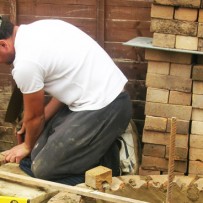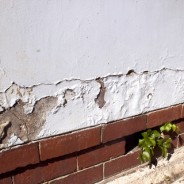Home
With over thirty years of experience, Elmwalk Developments take great pride in their reputation as Dorset’s most trusted and recommended building contractors. With a commitment to excellence, it’s no surprise they have enjoyed repeat business with many clients over the years.
Possessing an in-depth knowledge of current building regulations, they can assist in every aspect of ground works, and bring with them a wealth of problem-solving skills.
An approved contractor to Clancy Docwra and The Environment Agency, Elmwalk’s clients have included The Bournemouth International Centre and Compton Acres, where they built the new Italian Villa.
Elmwalk Developments undertake all aspects of building work, so whether you’re considering an extension, a new driveway, or you’re a property developer or architect looking for a reliable and trustworthy team for new builds or renovations, Elmwalk Developments guarantees a first-class service on-time and on-budget.
Call today on 07966 150045 or email us for a free, fair and honest quotation.
Posted by Admin on February 8, 2014 in News | Comments Off on Wet weather
This time of year is very challenging in our trade, as most of the time we are working outside and at the mercy of the elements. Brickwork can continue until the muck starts to run then its down tools and cover up. Most aspects of Groundworks on the other hand can be done in all weathers but end up being a touch messy!
Whilst a 1.5 tonne excavator is mainly used for digging; this is only possible when it can fit round the rear of the property or is safe to use when underground services have been discovered.
Posted by Admin on January 10, 2014 in News | Comments Off on Hidden land drains on a recent extension project
We were contacted by a customer who had recently visited one of our previous jobs. He was impressed with the quality of finish and the previous customer was more than happy recommended us to him.
On the first couple of days excavating the foundations we came across a unknown old clay pipe running the full length of our dig line. We broke some of the pipe out and noticed that there was clear water consistently running through it with the far lower end being totally blocked by tree roots and sludge on the neighbours property. The client had mentioned that the garden gets very boggy with the slightest bit of rain now he knows why!
We Consulted the water board to see if they had any records of it but to no avail. The building inspector was brought in to discuss this matter as constant running water and foundations don’t mix!
The decision was made to divert this running water into the surface water system connected to the down pipes and running in to the road. Although this sounded easy the land drain was a lot deeper than the pipes from the guttering and resulted in us having to connect the new pipe half way up the drive as to form a run from rear of property. Once this was all done the client noticed that the garden did not flood as easily and is noticeably drier.
Posted by Admin on February 14, 2013 in News | Comments Off on Problems with damp
Damp can damage much more than a buildings appearance. It may lead to the deterioration of plaster and masonry, promote timber decay and create unhealthy conditions for occupants.
Unfortunately, inappropriate treatments for damp commonly cause greater harm to old buildings than centuries of degradation. Over-reliance on electrical moisture meters frequently leads to unnecessary expense and damage through the retrospective installation in walls of horizontal damp proof barriers (damp proof courses or DPCs). Equally the harm done by modern solutions that aim to seal old walls rather than improve their ability to breathe is underestimated.
An appreciation of how the basic construction of old buildings differs from that of new ones will help you avoid such misguided remedies.
Posted by Admin on February 14, 2013 in News | Comments Off on Acquiring Planning Permission for your build
Acquiring planning permission for your build is stressful as the whole project can hinge on whether or not your request is granted. Utilising the skills and experience of an architect is key when you are looking to give yourself the best chance of getting your plans approved as they will be able to develop precision drawings that clearly show how you wish your new home to look.
If your plans aren’t approved, it isn’t the end of the world as adjustments can be made following the suggestions made by the planning officer. These could be major or minor changes and you will need to work closely with your architect to ensure you don’t lose any of the key features of your build but ensure you comply with the regulations in place.
Posted by Admin on July 14, 2012 in News | Comments Off on Breathability in old buildings
Old buildings must be allowed to breathe. Whereas modern buildings rely on keeping water out with a system of barriers, buildings that pre-date the mid-19th century are usually constructed of absorbent materials that allow any moisture that enters to evaporate back out.
Because most old buildings were constructed with solid walls without DPCs and originally had no roofing felt, rain or below ground moisture could both enter. This did not, however, mean dampness was inevitable.
Before central heating was commonplace, heat from open fires drew in large quantities of air through loosely fitting windows and doors. This high rate of ventilation would have quickly evaporated moisture from permeable internal surfaces while the wind dried out any damp roof timbers or permeable external wall surfaces. An equilibrium was therefore established whereby the moisture being absorbed was equal to that evaporating.
When upgrading an old building, you must maintain this equilibrium for the building to work as intended and remain dry.




